Folding bikes are becoming popular due to their convenience and practicality. These bikes can fold up and down quickly, which is great for commuting to work or running errands.
But are folding bikes good for long rides?
Folding bikes are suitable for long rides as long as the terrain isn’t too challenging. These bikes are also practical, comfortable, and have wide wheelbases that offer better traction for rough terrain.
The trick is to choose a folding bike with a minimum six-speed gear shift and 20-inch wheels to handle hilly terrain better and maintain speed over a long ride.
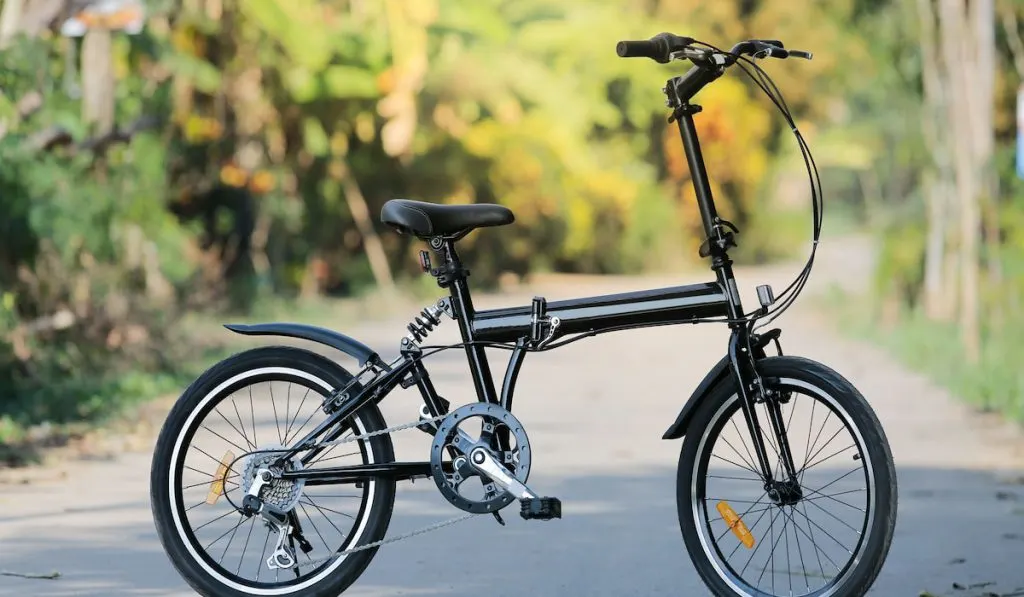
However, unlike touring bikes designed for long commutes and rides, folding bikes have some drawbacks that you need to know when considering whether you should take one for a long ride.
Read on to find out more about what makes folding bikes suitable for long rides. We also explore potential problems of folding bikes for long commutes.
Are Folding Bikes Good for Long Rides?
Riding a bike for a long distance can mean either commuting to work or cycling somewhere out of the city.
If your long-distance route involves a long cycle that will require constant speed and excellent suspension, you’re better off with a road bike with large wheels. A bike with large wheels allows you to reach top speed easily and keep the momentum.
However, a folding bike would also work for long distances as it’s easier to accelerate small wheels.
Most folding bikes have 20-inch wheels, which may not be the best wheel size but is still large enough for most purposes.
Additionally, if your long ride involves using a train or bus and you need to bring your bike along, a folding bike would be the best option. You can easily fold the bike and carry it along due to its compact and lightweight nature.
Note that modern high-end folding bikes now have better suspension and carbon fiber frames and can be customized with larger tires and wheels for an easy commute and the ability to handle rugged terrain.
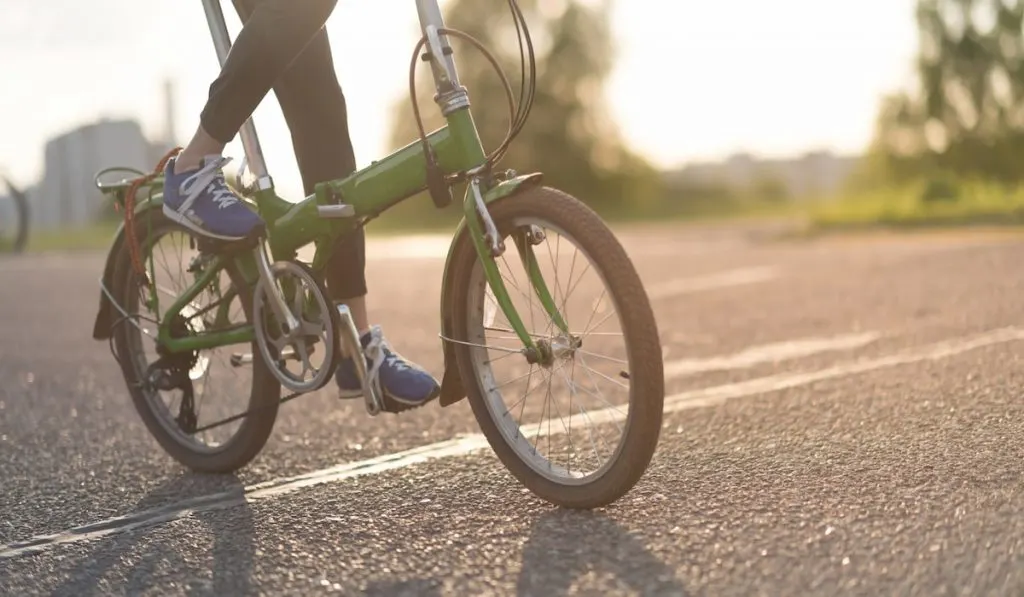
What Makes Folding Bikes Good for Long Rides?
Although folding bikes are not designed for long-distance rides, they have perks appropriate for long rides. Here are some of the benefits.
Portability and Convenience
A folding bike has a compact frame that easily fits inside a car or under a work desk. You don’t have to worry about leaving your bike outside if you’re commuting to work or worry about where to fit it on a train or bus.
If you’re planning a long ride, you can fold up the bike, use public transport for half the distance, and cover the rest with the bike.
Folding bikes are also perfect for campers and hikers who prefer a portable bike when traveling long distances. You can fold the bike and walk in rough terrain, something you can’t do with a regular bike.
The bike’s convenience and portability make it a popular option for cyclists going for a long ride.
Lightweight
Modern folding bikes are made from lightweight materials, suitable for long-distance rides.
Planning a long ride means there are places you may need to walk and others where you’ll ride the bike. Carrying a regular bicycle can be tedious, especially with rough terrain and obstacles.
A folding bike is light and compact, allowing you to move it around quickly.
It Can Be Customized for Different Terrain
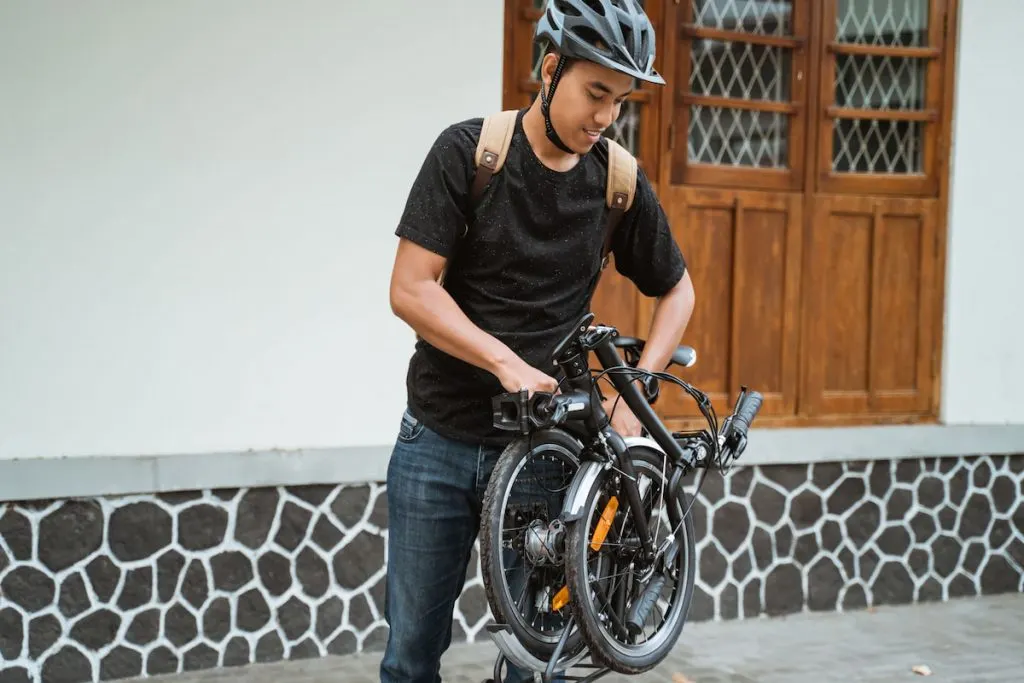
A quality folding bike allows you to travel on various kinds of terrain. The best thing is to customize your folding bike and add better suspension and tires to ensure that it can handle rough terrain.
What Problems Are You Likely to Encounter When Using Folding Bikes for Long Rides?
Some of the challenges of using folding bikes for long rides include the following:
Small Tires
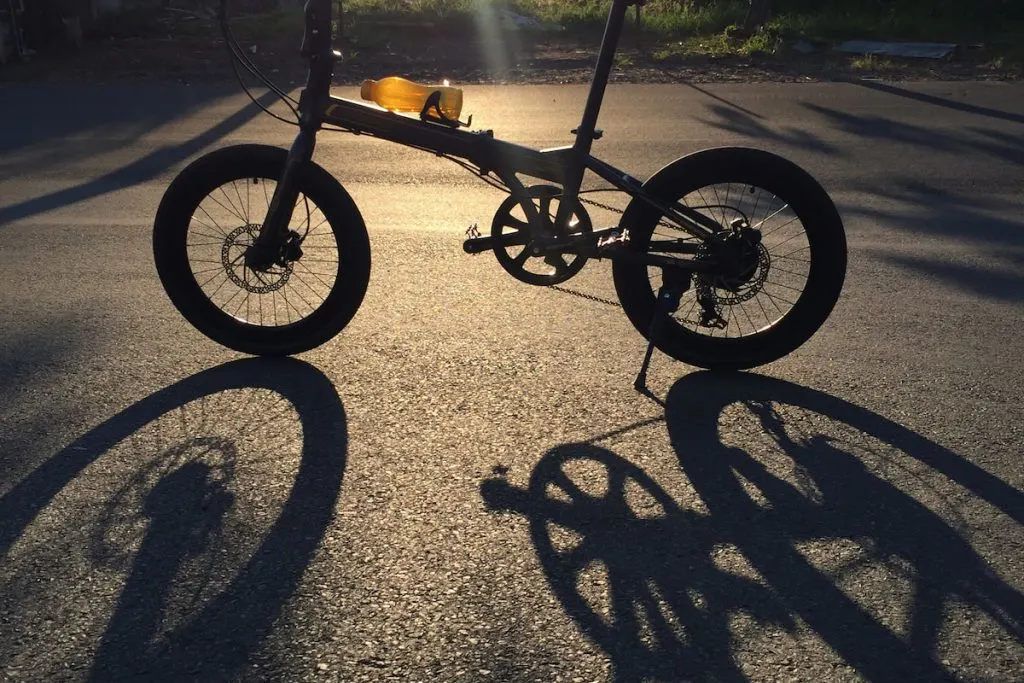
Folding bikes have smaller tires than average bicycles. Their wheels range from 12-20 inches, with tires of 26 inches.
The small wheels can make it challenging to ride on rough terrain or for long distances. You may need to customize your folding bike and add new tires and suspension to make your ride easier and smoother.
Furthermore, folding bikes have joints on the frames, so you can’t ride them like a mountain bike. Applying too much pressure on the bike could cause the frames to break.
Tricky to Control Downhill
Controlling a folding bike going down or up a hill can be challenging due to the small wheels and limited gear range.
You’re likely to encounter such terrain when riding long distances, and you need a bike to handle that.
A folding bike may not perform like a regular mountain bike.
Folding bikes are also not as stable, making them challenging to ride, especially if you need to ride fast.
While you may gain some speed when going for a short ride, you’re likely to get tired when cycling for a long distance.
Not Ideal for Potholed or Rough Roads
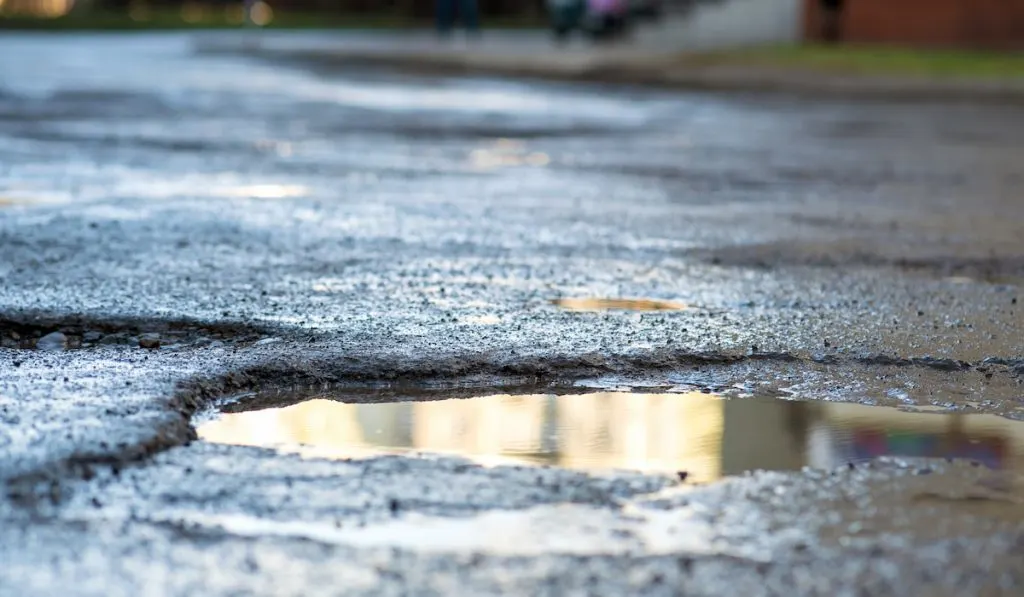
Most folding bikes aren’t suitable for off-road or potholed roads. Although this bike will work fine for gravel or dirt paths, it doesn’t do well for off-road or potholed trails.
Some folding bike manufacturers have their warranty exclude cross-country use.
If you’re planning to take a long ride and aren’t sure about the condition of the road, you’re better off with a mountain bike.
It May Not Be Comfortable for Long Rides
Folding bikes lack adequate suspension. Combined with small wheels, you’re likely to feel any pothole or bump when riding your bike.
Unfortunately, folding bikes are not designed for rough or off-road terrain and may not be comfortable on these surfaces.
Not Designed for Tall or Overweight People
Unfortunately, folding bikes have a weight limit and can’t hold more than 300 pounds. Their petite frames also make them uncomfortable for tall guys.
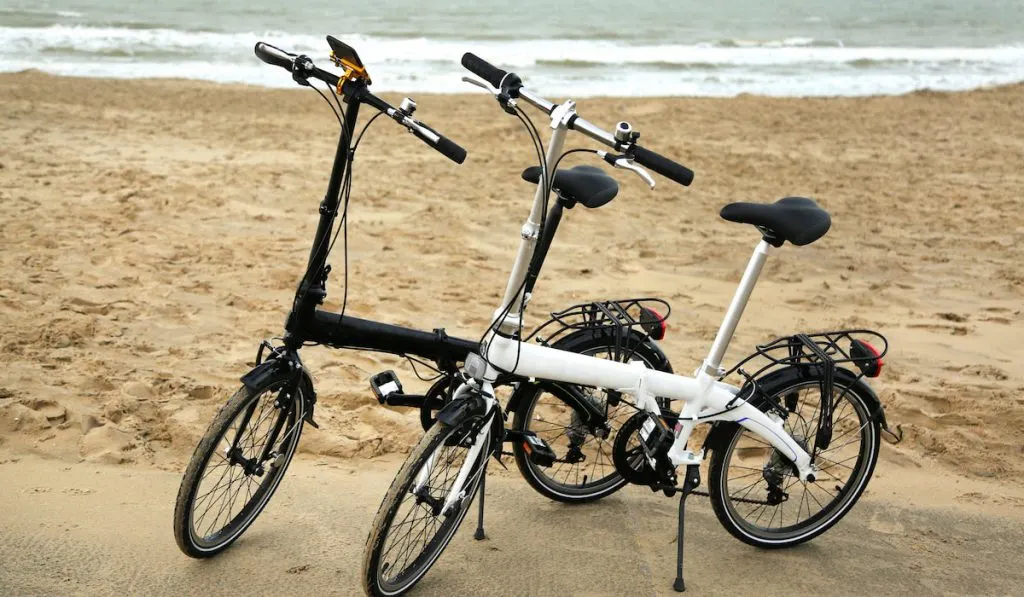
Factors to Look for in a Folding Bike for Longer Rides
A quality folding bike can be used for long-distance rides or commutes. However, there are specific characteristics to consider:
The Design
Check how the bike folds and unfolds to determine its practicality. You should also look at the type of components it’s made from to ensure that it’s durable and can handle any terrain.
Find out if it takes up space or can be folded down and carried quickly.
Weight of the Bike
Another factor to consider is the weight of your folding bicycle. Can you carry it around when camping, and can you lift it when getting on the bus?
Test it out to ensure you’re comfortable with the weight.
Ride Quality
The feel and steering of the bicycle are essential to test when shopping for a folding bike.
Check how the bike steers and feels to ride. Are you able to ride and steer without struggling?
Don’t forget to check the bike’s sturdiness when riding it. Test the brakes, tires, handlebar grips, pedal quality, and gear changes.
Comfort is another essential aspect that determines ride quality.
While it’s impossible to avoid feeling rough terrain or bumps on the road due to the small tire size, you should ensure that there’s an excellent suspension system to help you navigate such a landscape.
When choosing the right folding bike for long rides, plan to visit several bike shops to get expert advice on the best model to buy. You also get a chance to test-ride the various modes available and find one that best works for you.
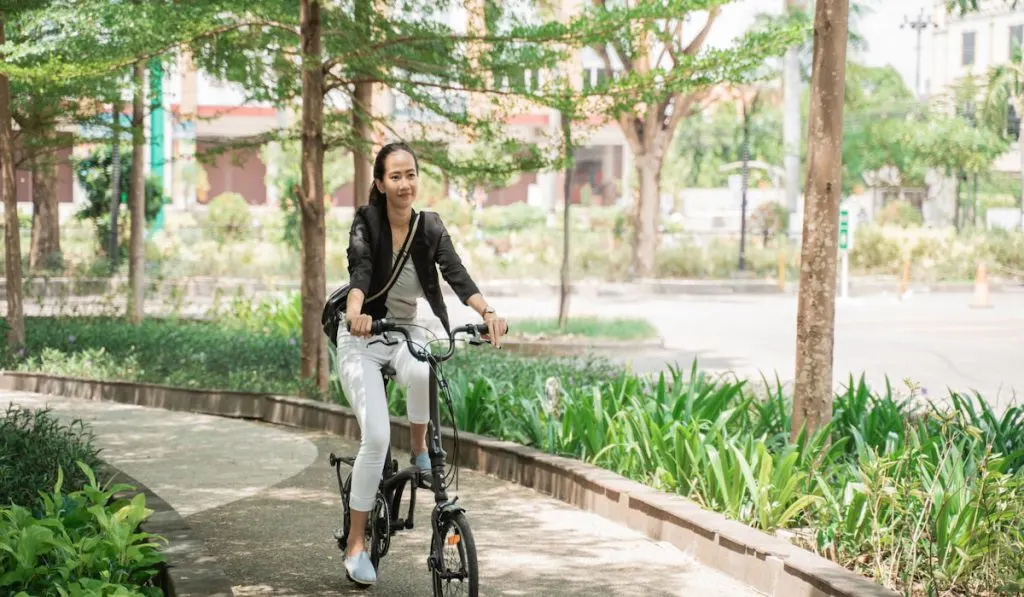
Final Thoughts
Deciding whether a folding bike is ideal for a long ride depends on several factors.
A folding bike would be an excellent option if you’re looking for a bike that’s easy to carry around on a hiking or camping trip and can handle a reasonably good road without potholes or rough terrain.
However, if you’re planning to go for a long ride that involves climbing hills and traversing rugged terrain, you’re better off with a regular mountain or touring bike.
Resources
- https://bikefinest.com/are-folding-bikes-worth-it/
- https://bikesreviewed.com/helpful-guides/folding-bike-good-for-long-ride/
- https://www.britishcycling.org.uk/commuting/article/ww-Wise-Words-Folding-Bikes-0
- https://cyclistresource.com/folding-bikes-are-they-good-for-long-rides/
- https://amsterdamhangout.com/are-folding-bikes-a-good-option-for-a-long-rides/
- https://www.foldingbikehut.com/are-folding-bikes-good-for-long-rides/
- https://bikecommuterhero.com/are-folding-bikes-good-for-long-distances/
- https://bikepush.com/are-folding-bikes-good/
- https://twowheelsbetter.net/are-folding-bikes-good/
- https://goingfitunfit.com/folding-bikes-the-good-the-bad-and-the-ugly/
